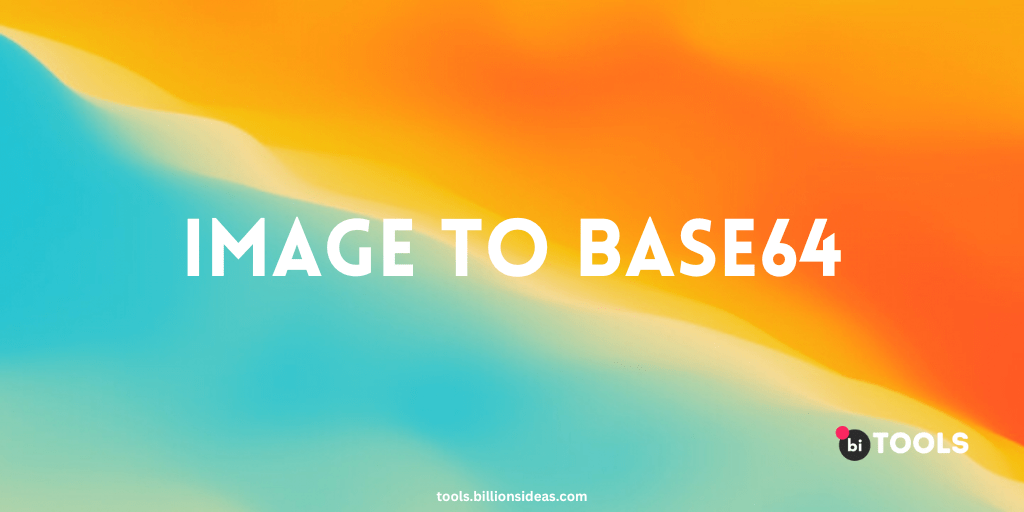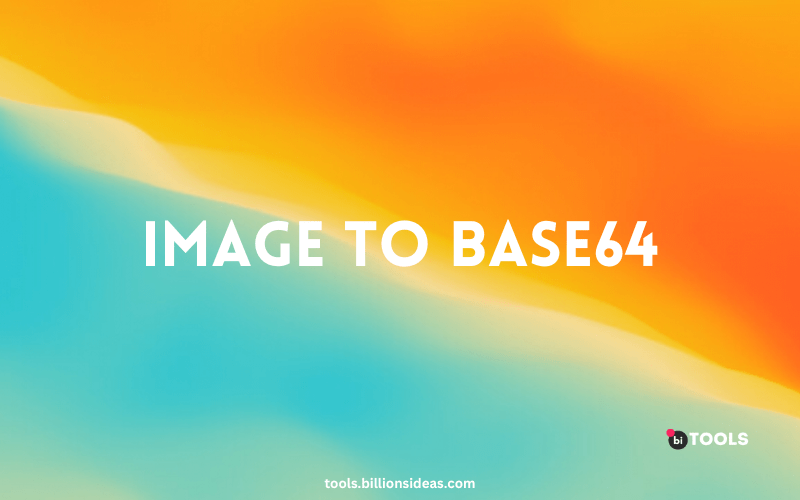Image To Base 64 Converter
PNG, JPG, JPEG, WEBP, ICO, BMP, AVIF, TIF, TIFF, GIF, BIN to Base 64 Converter

In the world of web development, images play a significant role in enhancing user experience and conveying information visually. Traditionally, images are stored as separate files on a server and referenced within HTML using the <img> tag. However, with the advent of Base64 encoding, developers now have the option to embed images directly into the HTML or CSS files, eliminating the need for separate image files.
With the increasing usage of images on the web, finding effective ways to handle and transmit them has become vital. Image to Base64 conversion provides a solution by encoding images into text format, allowing easy integration and transmission within various contexts. This article aims to shed light on the image to Base64 conversion process, its applications, and best practices for implementation.
Contents
What is Image to Base64 Conversion?
Image to Base64 conversion is the process of transforming an image file into a Base64 encoded string. Base64 encoding uses a set of 64 characters (A-Z, a-z, 0-9, "+", and "/") to represent binary data. Each character in the Base64 string corresponds to 6 bits of the original binary data.
Why Use Image to Base64 Conversion?
There are several reasons why you might consider using Image to Base64 conversion:
- Reduced HTTP Requests: By converting images to Base64, you can embed them directly into your HTML or CSS code, eliminating the need for separate image files. This reduces the number of HTTP requests required to load a webpage, resulting in faster page load times.
- Improved Performance: Since Base64 encoded images are included within the source code, they can be cached by the browser along with other static resources. This caching mechanism improves overall website performance and reduces server load.
- Easy Embedding: When sharing HTML-based content via email or messaging platforms, embedding images can be challenging. By converting images to Base64, you can easily embed them directly into the HTML code, ensuring the images are visible to the recipients.
How Does Image to Base64 Conversion Work?
Image to Base64 conversion involves two main processes: encoding and decoding.
Encoding Process
The encoding process converts the binary data of an image into a Base64 string representation. It involves dividing the image data into chunks, converting each chunk to Base64, and concatenating the resulting strings. This concatenated Base64 string represents the image.
Decoding Process
The decoding process reverses the encoding process and converts the Base64 string back into binary image data. The resulting binary data can then be rendered or saved as an image file.
Benefits of Converting Images to Base64
- Reduced HTTP Requests: By converting images to Base64 and embedding them within the HTML or CSS, the number of separate image requests to the server is reduced. This leads to faster page load times and improved website performance.
- Easy Deployment: With images embedded as Base64 strings, there's no need to manage separate image files. This simplifies deployment and reduces the chances of broken image links.
- Improved Portability: Base64-encoded images can be easily shared and transferred as part of HTML or CSS files, making it convenient to distribute self-contained web components or templates.
- Offline Access: Converting images to Base64 enables offline access to websites or web applications since all the necessary resources are bundled within the HTML or CSS files.
Online Base64 Image Converter Tool
- BI TOOL : This tool allows you to upload an image file from your computer and converts it to Base64 encoding. It supports various image formats and provides the Base64 code as output, which you can copy and use as needed.
- Base64 Image Encoder : This online tool enables you to upload an image file or enter the URL of an image. It converts the image to Base64 and displays the result. You can copy the Base64 code or download it as a text file.
- Base64.guru : This website provides an image-to-Base64 converter. It allows you to upload an image from your computer or enter the image URL. After conversion, it presents the Base64 code, which you can copy to use in your projects.
Conclusion
Image to Base64 conversion offers a convenient way to handle and transmit images within various contexts. By encoding images as Base64 strings, web developers can streamline deployment, reduce HTTP requests, and enhance performance. However, it's important to consider the trade-offs in file size and caching limitations. By following best practices and implementing image to Base64 conversion judiciously, you can leverage its benefits effectively.
FAQs
Can I convert any image to Base64?
Yes, you can convert the most common image formats, such as JPEG, PNG, and GIF, to Base64.
Will using Base64-encoded images impact my website's SEO?
Base64-encoded images can increase the file size of HTML/CSS files, potentially impacting page load times. However, optimizing image size and implementing other performance optimizations can mitigate this impact.
Are there any security concerns with Base64-encoded images?
Base64 encoding is not a security measure. It is a method of encoding binary data for transmission or integration purposes. If security is a concern, additional measures like encryption should be employed.
Can I convert Base64-encoded images back to their original format?
Yes, Base64-encoded images can be decoded back into their original binary format. However, the purpose of Base64 encoding is usually for integration or transmission rather than reversible storage.
How do I handle images that are too large for Base64 encoding?
For very large images, it's recommended to optimize and compress them using traditional image compression techniques before converting them to Base64.
